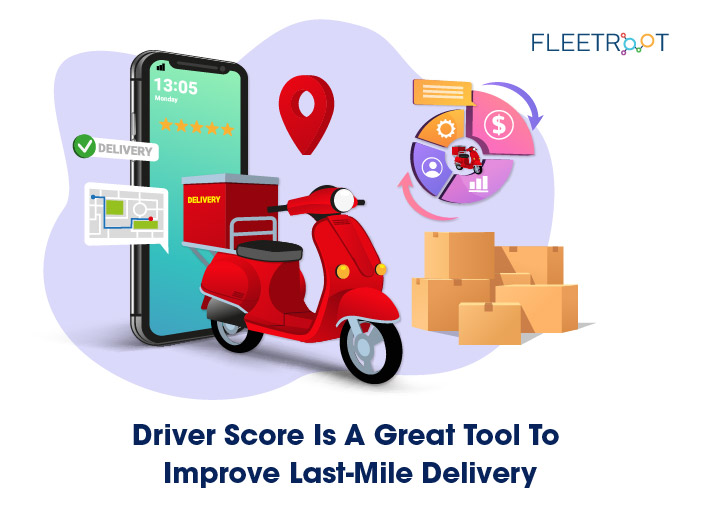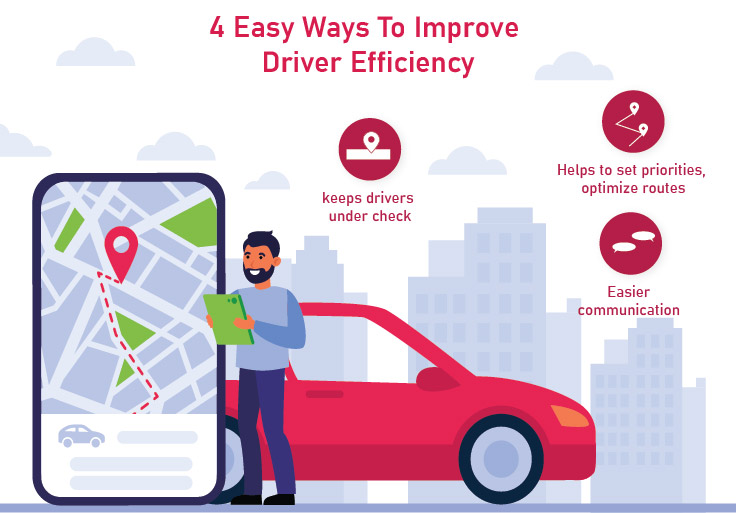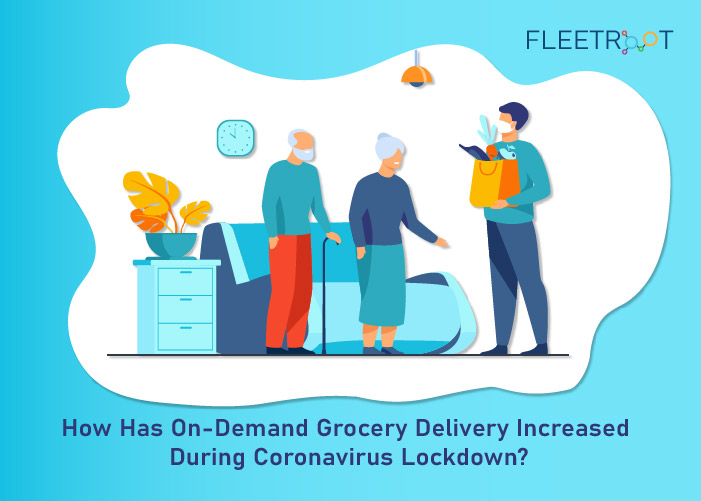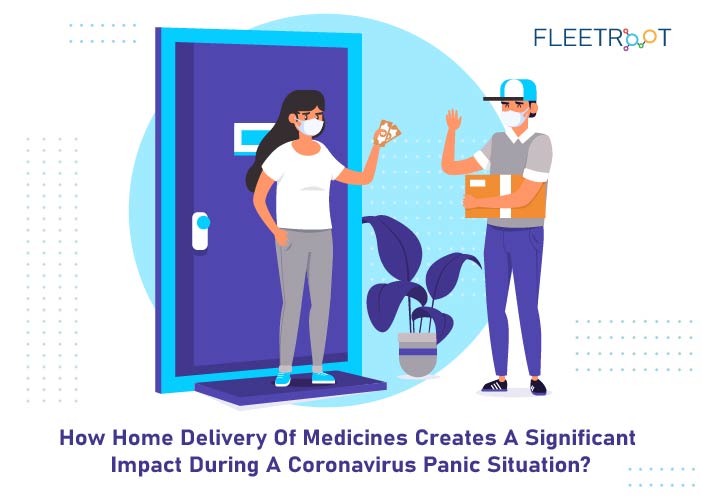Executive Summary
A Driver Scorecard is a method of evaluating the performance of your drivers using pre-determined metrics. Defining and using accurate and relevant metrics for assessing Driver Performance is most important in maintaining an efficient and motivated team of drivers that contribute positively in managing the all-important Last-Mile Delivery, which, is a critical component of generating Customer Satisfaction these days, especially with the advent of e-com businesses and innumerable deliveries.
It would be impossible for companies to develop a loyal customer base without keeping their customers satisfied – therefore, organizations must invest the requisite time, effort, and money in developing and retaining a solid team of drivers.
What is a Driver Scorecard?
Some of the most common improvements that transport managers are forever trying to make in their fleet performance include improved delivery times, fewer accidents, reduced violations, lower fuel costs, lower maintenance costs, fewer part replacements – notably, all transport managers will often say “all of these!”.
A Driver Scorecard is a process of using pre-determined metrics to evaluate the performance of your driver. Modern technological advances in fleet management software, vastly improved hardware tools like ELDs (Electronic Logging Devices), and data analytics have enabled a robust method of Driver Scorecard development and management.
Scorecards reveal valuable and actionable insight on driver-performance across individual performances, in comparison with other fleet-drivers, whether their performance matches those assigned to them (etc.).
The insight drawn from these Driver Scorecards is used for developing a framework for managing your team of drivers. Doing this successfully enables companies to achieve critical metrics of business performance and to operate a profitable business.
What Is Last-Mile Delivery?
Last-Mile Delivery, literally, is the last-leg of distance that goods travel before reaching their final destination. This could be your customer’s doorstep, a factory that consumes the parts delivered (etc.). Last-Mile Delivery focuses on delivering goods in the most efficient, cost-effective and shortest time possible.
Last-Mile Delivery Benefits: Last-Mile Delivery has innumerable benefits across all areas of an organization’s operations including maintaining shipment visibility and transparency, optimizing deliveries, personalizing fulfillment, enabling businesses to scale, increasing productivity and profitability.
Most importantly, it is directly responsible for generating and maintaining Customer Satisfaction (Cx), which, is directly connected with customer engagement and building a loyal customer base. Without loyal customers, a company cannot hope to run a sustainable and profitable business.
In today’s world, Customer Experience has overtaken Product & Price as a prime differentiator.
Last-Mile Delivery and Customer Satisfaction: Last-Mile Delivery is directly responsible for your customer satisfaction – especially for E-com businesses. For today’s brands, Customer Experience (Cx) has overtaken product and price as the prime differentiator. Therefore, unless company logistics focus on Last-Mile Delivery to ensure great Cx, they risk failure.
Last-Mile Delivery Challenges: 4 of the Top 5 Last-Mile Delivery challenges are driver-related.

(Source: Bobit Research Services)
- Driver Hiring/Management – 46%
- Driver Safety – 42%
- Vehicle Maintenance/Damage Repair – 42%
- Crashes/Claim Management – 36%
Other leading pain-points such as Customer Experience (32%) and Fuel Conservation (22%) were also directly related to drivers.
The vehicle insurance industry is increasing of the opinion that the majority of disciplined customers shouldn’t have to pay for the misdemeanors of some.
Insurance companies now fix black boxes inside a vehicle and use highly sophisticated sensors to track a driver’s behavior. Based on pre-determined metrics like safety compliance, aggressive driving, fuel consumption, and adherence to speed limits, the insurance premiums are tailored to an individual.
Driver Scorecard & Last-Mile Delivery: what’s the connection?
As mentioned earlier, Customer Service and Last-Mile Delivery systems are now critical for the success of an organization. We have seen (above) how driver participation and involvement are directly connected with benefits and pain points in managing an efficient Last-Mile Delivery system.
Driver Scorecards are a critical tool to manage efficient Last-Mile Delivery:
Using effective metrics to build and maintain a Driver Scorecard will not only help your drivers to improve but also help you cut costs, improve performance, and reward good drivers.
Business benefits of Driver Scorecard include:
1) Costs:
- Fuel economy, vehicle utilization, maintenance, and repair expenses. Improved driver behavior cuts fuel costs up to 20%. Tracking driver behavior helps in building cost-saving attitudes and practices
- Violation fees
2) Compliance, Safety:
- Safety is a non-negotiable element of the job. Poor compliance and safety records compromise fleet safety and endanger several lives.
- Unsafe drivers can cause the company’s image to suffer irreparable damage in society and become PR debacles.
- Maintaining high safety standards and data analytics can also help prevent accidents before they occur.
3) Training & Development:
- Due to urgent requirements, companies often hire drivers who aren’t as experienced as they may want. A scorecard helps in identifying training and development needs of each driver and putting them through the paces
- Those that are unable – or, refuse – to match company benchmarks can be replaced
4) Driver Morale, Team Spirit:
- Company management must be mindful of the morale of their team of drivers and their ‘happiness index’ on the job. They do a tough, operational job and spend many hours on the road under difficult conditions. Regular team-building activities, even something as simple as “coffee-and-donuts-breakfast- at-work”, goes a long way in making them feel valued and building team spirit
- Communicate regularly and meaningfully with your drivers. Poor communication, miscommunication, misunderstandings (etc) not only create a poor work culture but can also snowball into larger, endemic problems
- Keep them suitably informed about route changes, delays, weather, and traffic conditions
Thereafter, you can:
- Compare each driver against prescribed fleet targets and averages
- Improve vehicle TCO (Total Cost of Ownership) and RoI
As a result, you can identify some common areas for driver improvement, incentives and recognition:
- Driving behavior, safety protocols
- Best drivers for recognition
- Training needs
- Incentives to improve performance.
- Cost reduction areas
- Conduct team-building exercises, eg periodical workshops
Ultimately, this has direct impact (benefit) on customer satisfaction and the success of the business.
Enabling Driver Performance: using modern tools like GPS-enabled Fleet Tracking Software
A great modern tech-tool for Logistics, Supply Chain and Fleet Management is a cloud-based, GPS-enabled Fleet Tracking Software. Located on a centralized Cloud-Server, it can be easily integrated into existing company systems, and is an efficient, nimble, cost-effective, and flexible tool that can be used by companies to manage fleets of all shapes and size. Such cloud-based fleet management software enables firms to maintain efficient Driver Scorecards and benefit from it.
Conclusion: as we have seen, driver performance is directly related to a company’s Last-Mile efficiency, and, in turn, to Customer Satisfaction. Therefore, using Driver Scorecards effectively to maintain high levels of operational efficiency is critical for today’s organizations.
Last Mile Delivery Management Software helps to get optimized routes for reducing delivery time & cost.




